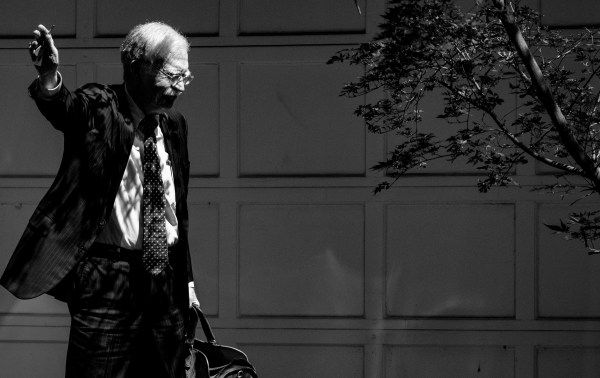It will come as no surprise to anyone paying even a little bit of attention to the news that the latest numbers on Americans’ religious participation are down. Again.
The long, steep rise in the “nones,” Americans who don’t profess any spiritual beliefs, has been one of the big shifts in American politics and culture in the past 20 years. In 2007, Pew Research found that just 16 percent of adults said they were atheists, agnostics, or believed in “nothing in particular.” By 2022, that category had almost doubled to include nearly a third of all adults.
The number actually ticked down to 28 percent last year, the most notable one-year decline since Pew started tracking the group. A 4-point dip could be just polling noise or, maybe, the start of something.
But even if more Americans are opening up spiritually, the believers are increasingly hiding their lights under their bushels.
Over a roughly parallel period to Pew’s examination of the “nones,” Gallup has been tracking the behavior of believers, asking how often they attend religious services. It’s a different poll, looking at a different group of Americans, but the results are nearly perfectly inverted. As the number of “nones” went up, attendance among those they left behind in various faiths went down.
At the start of this century, 42 percent of U.S. adults attended religious services “weekly or nearly every week.” Now it’s 30 percent. But, again, that’s not the fault of non-believers. That’s within members of various denominations. Roman Catholics, down 12 points, and Orthodox Christians, down 9 points, saw the sharpest declines since 2000, while Protestants dipped 4 points.
Only two major sects, Judaism and Islam, saw increases over the same period, with Jews climbing 7 points and Muslims up 4 points. Mormons basically held steady.
What about the 70 percent of believers who aren’t filling the pews on the regular? Eleven percent say they make it about once a month, but most, 56 percent, say “seldom” (25 percent) or “never” (31 percent).
So this is the part where we wring our hands and lament the decline in not just common beliefs to unite Americans, but the overall slide in engagement and civic participation. After all, it’s not just in our houses of worship where Americans have stopped showing up. The empty seats at the Rotary lunch, the quiet union halls, the “double haters” who reject both major parties, and the tiny, idled engines of the Shriners’ cars all tell us the same story.
Indeed, the idea of the disintegration of America’s Toquevillian communitarian impulse had entered our thinking even before the slide hit its stride. Robert Putnam’s Bowling Alone came out 24 years ago, warning Americans about our looming bankruptcy of social capital. The book’s subtitle—The Collapse and Revival of American Community— proved to be only half right.
Putnam was writing before American life moved online so fully, before Zoom meetings and contactless deliveries. Before hookup apps could turn even the pleasures of the flesh into a digital transaction. Before our alienation from each other fully poisoned our politics, which, in turn, alienated us further.
But let’s not wring our hands this Holy Week. Let’s also not scold the solo bowlers, independent voters, Tinder swipers, and Instacarters. And save your opprobrium for the institutions they left behind.
We know the truth. America’s formerly unifying institutions failed their tests again and again: scandal, corruption, self-dealing, and incompetence. Sometimes the disruptions were just rational functions of consumer choice, but whatever the causes, we have to acknowledge that most of us live in an Alienated America.
There’s good and important work going on to remedy some of those problems, but the idea that the “revival of American community” is anywhere near at hand seems even less likely today than it did when Putnam issued his warning.
Instead, let’s look at the glass half full. If 30 percent of Americans go to their church, mosque, synagogue, temple, or dimly lit shrine to David Hasselhoff nearly every week, that’s 78 million people or so in an adult population of about 260 million. Add in the monthly worshippers, and you have more than 106 million souls gathering together on a pretty regular basis.
That’s 57 percent more than the number who bet on the Super Bowl, more than triple the number who watched this year’s State of the Union address, and more than double the number of daily active TikTok users in the U.S.
Slim solace if you are interested in saving souls, I understand. Shrinking congregations and the rise of the spiritually homeless are more than frustrating to Americans who see the faith of their forebears dwindling.
But it is worth saying that 106 million people is a lot of people, and that in America they can choose who, how, and where to worship. Indeed, the resilience of communal worship in the face of an onslaught of competition for our attention says something important about Americans and our faiths. After all, it could be worse. You could be in the movie theater business.
If you find yourself at church on Sunday, don’t scowl at the twice-a-year attendees fumbling through their hymnals or mumbling the Apostles’ Creed. Don’t sigh at the thought of all the seats that will be empty again next week.
Rejoice in the fact that you and they are both free to worship or not worship as you wish and marvel at the fact that so many tens of millions will be back again.







Please note that we at The Dispatch hold ourselves, our work, and our commenters to a higher standard than other places on the internet. We welcome comments that foster genuine debate or discussion—including comments critical of us or our work—but responses that include ad hominem attacks on fellow Dispatch members or are intended to stoke fear and anger may be moderated.
With your membership, you only have the ability to comment on The Morning Dispatch articles. Consider upgrading to join the conversation everywhere.